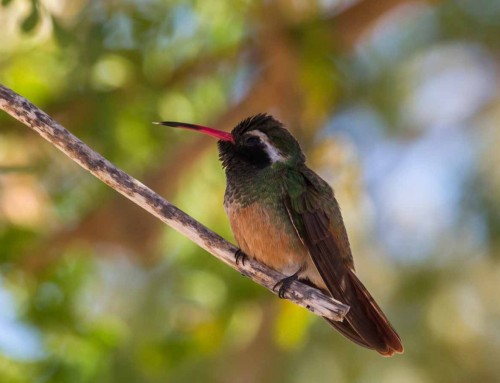Spotlight Series contains blog posts written by Searcher naturalists on curious and fascinating topics from our Searcher Natural History Tours to Baja California. Search for “Spotlight Series” to read them all.
by Searcher naturalist, Paul Jones
Standing sentinel over the mangrove swamps and saltmarsh complex on the NW shore of Laguna San Ignacio is a lone cardón cactus (Pachycereus pringlei). How this individual got there, whether by bird dropping or on the wind, and how it managed to find a way to thrive in that harsh location will remain a mystery. Should the time and tides work in your favor, you will see it if you make a short excursion into the mangroves while the lagoon. Look for it there and remember it In stark contrast in all its loneliness to the normal way in which these plants grow, mainly in large cactus forests locally known as cardonales.

An arm starting from the trunk of a large adult. Photo by Paul Jones.
Many of you will be familiar with cardón’s northern cousin of the Sonoran desert, the saguaro cactus. While cardón is nearly endemic to Baja, it can be found on the mainland. However, unlike its cousin, cardón is not frost tolerant and is, therefore, saguaro’s ecological counterpart in warmer climes.
On the Searcher tour, the most majestic and impressive cardón forest can be found on the arroyo walk on Isla Santa Catalina. When we stop there, you will want to walk quietly up that canyon as you look at hundreds of individuals towering as high as 50 or 60 feet in total height. Atop the tips of their arms, we will look for birds such as the northern cardinal, white-winged dove, phainopepla, verdin, black-throated sparrow, gila woodpecker, and raven. Not only can hawks nest on the cardón arms, but woodpeckers can drill holes to make nest cavities. The plant responds by creating a callous, which when hardened, makes for a perfect “nest box” for the woodpeckers and owls, such as the elf owl or the rare Cape pygmy-owl. When the plant dies, these callosities can be found on the ground amidst the decomposing pulp and ribs and are known as “desert boots.”
Take a good close look at these wonderful giants on our trip as they are the desert counterparts to the giant sequoias or redwoods of the temperate forest.

An example of a “nursery plant” relationship. This larger individual might be older than 50 years while the smaller ones are “millenials.” Photo by Paul Jones.
Standing at the base of one of these giants, imagine the shallow network of roots which, with the help of a single short tap root, can support as much of 25 tons of weight. These are really slow-growing and long-lived plants. To get started in the harsh desert environment, many species need a “nursery plant” that the seedling grows up next to for protection from herbivores and the sun, and to help with water storage. A seedling might grow only an inch or so per year, meaning a plant that’s a few feet tall could be 40 years of age, which is roughly the age when they start their first arm. Some specimens are thought to be over 300 years old!

Several generations of cardón in a wash on Isla Santa Catalina. Photo by Paul Jones.
You will notice that the arms are fluted, allowing its thick waxy skin to flex like an accordion to take up the rains that fall with the onset of summer storms or chubascos. This allows them to store as much as a ton of water for the dry season. Associated with each ridge is a rib on the interior of the plant and in the middle is the pulp. The epidermis is photosynthetic as this plant has no leaves, just spines and flowers that emerge from the surface of the plant.
The white flowers have a rosy hint, and are in bloom from late winter into June. They open only at night to allow for bats, their primary pollinator, to feed at night. However ‘early birds’ and bees can have at it until the flowers closed up by midday. Once mature, the flowers turn into fruits with a spiny outer layer. These fruits were important to indigenous peoples who used the ribs with small hooks attached at the tip to reach up to the top of the cactus and pull them down. They either ate the pulp or dried it and later poured water through to produce a beverage as it’s purported to have medicinal or palliative effects. In addition cardón can provide a cactus band aid as locals put thin slices of the plant’s epidermis on skin wounds. Cardón ribs were used for a variety of purposes (in addition to the fruit gathering) – fuel for fires, fencing, roofs rafters, wall studs, and even fish spears.




